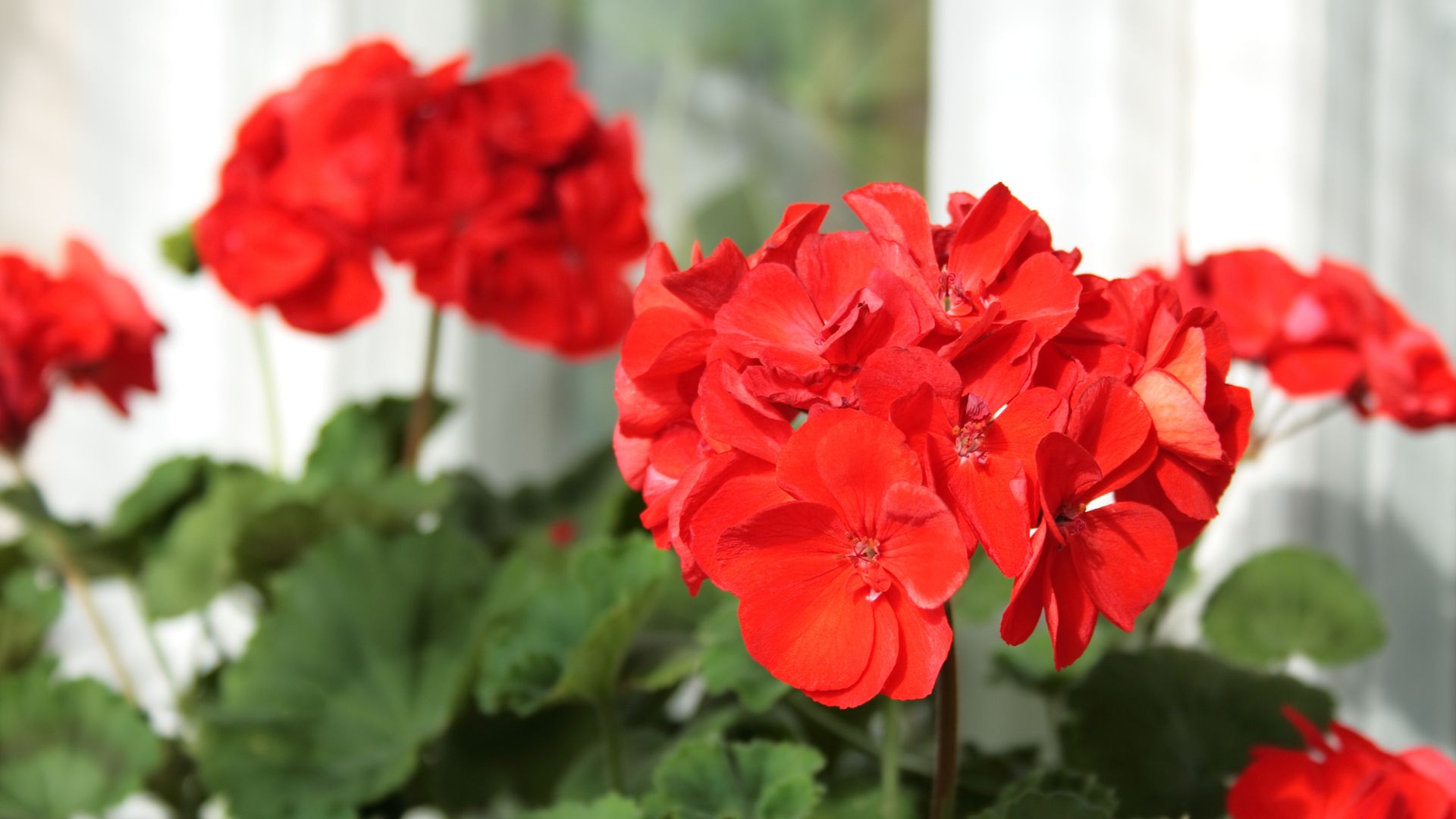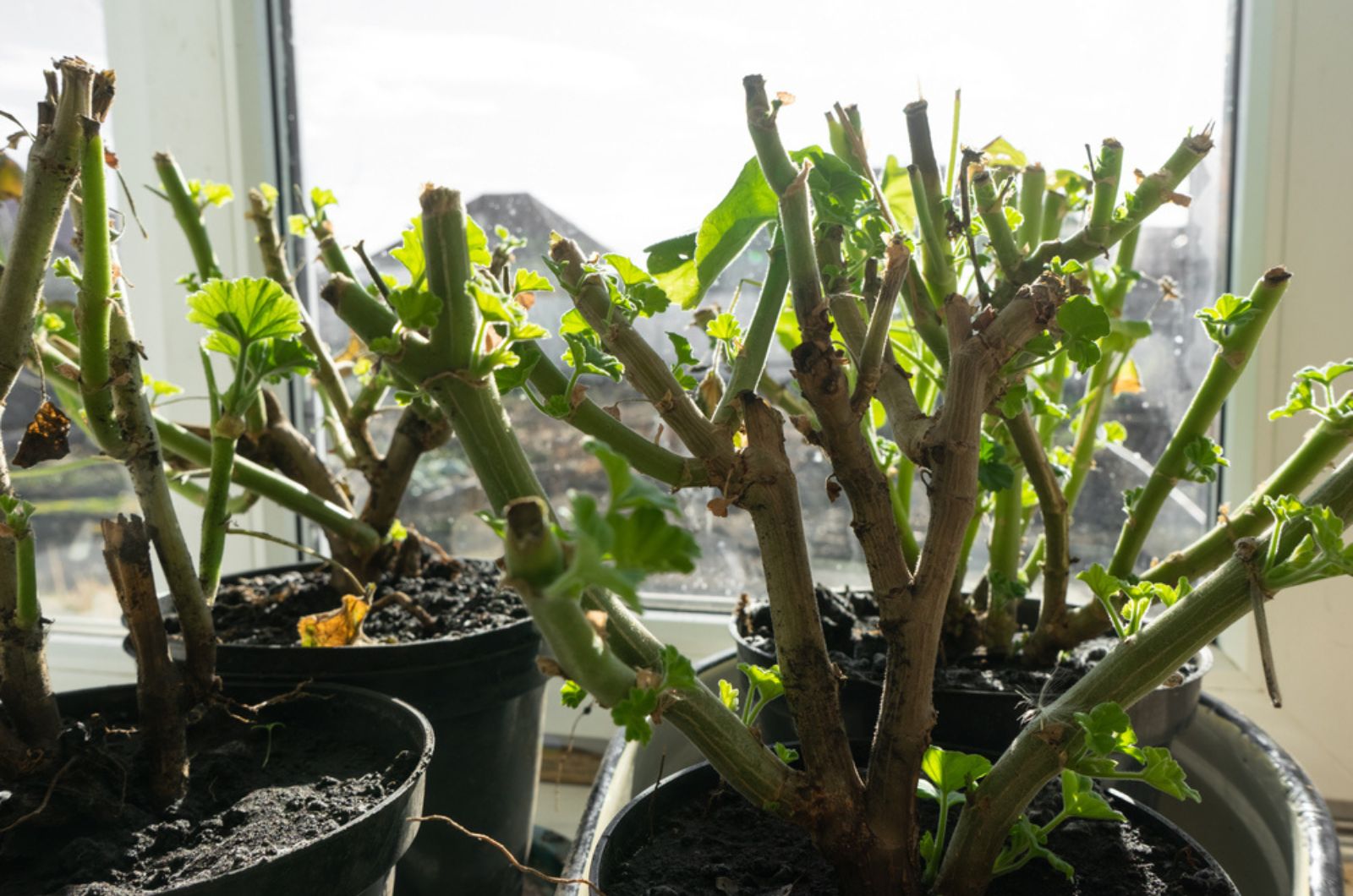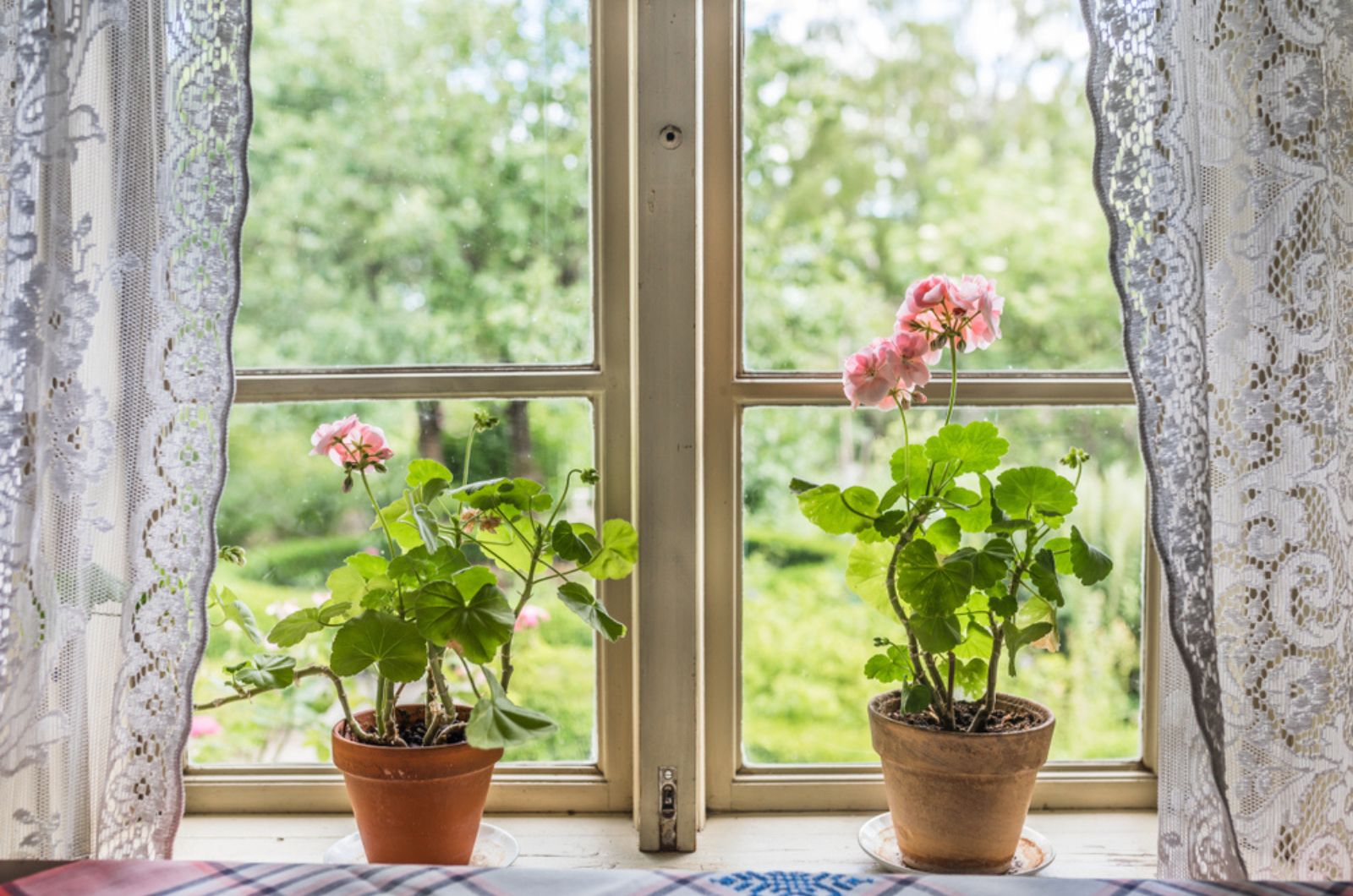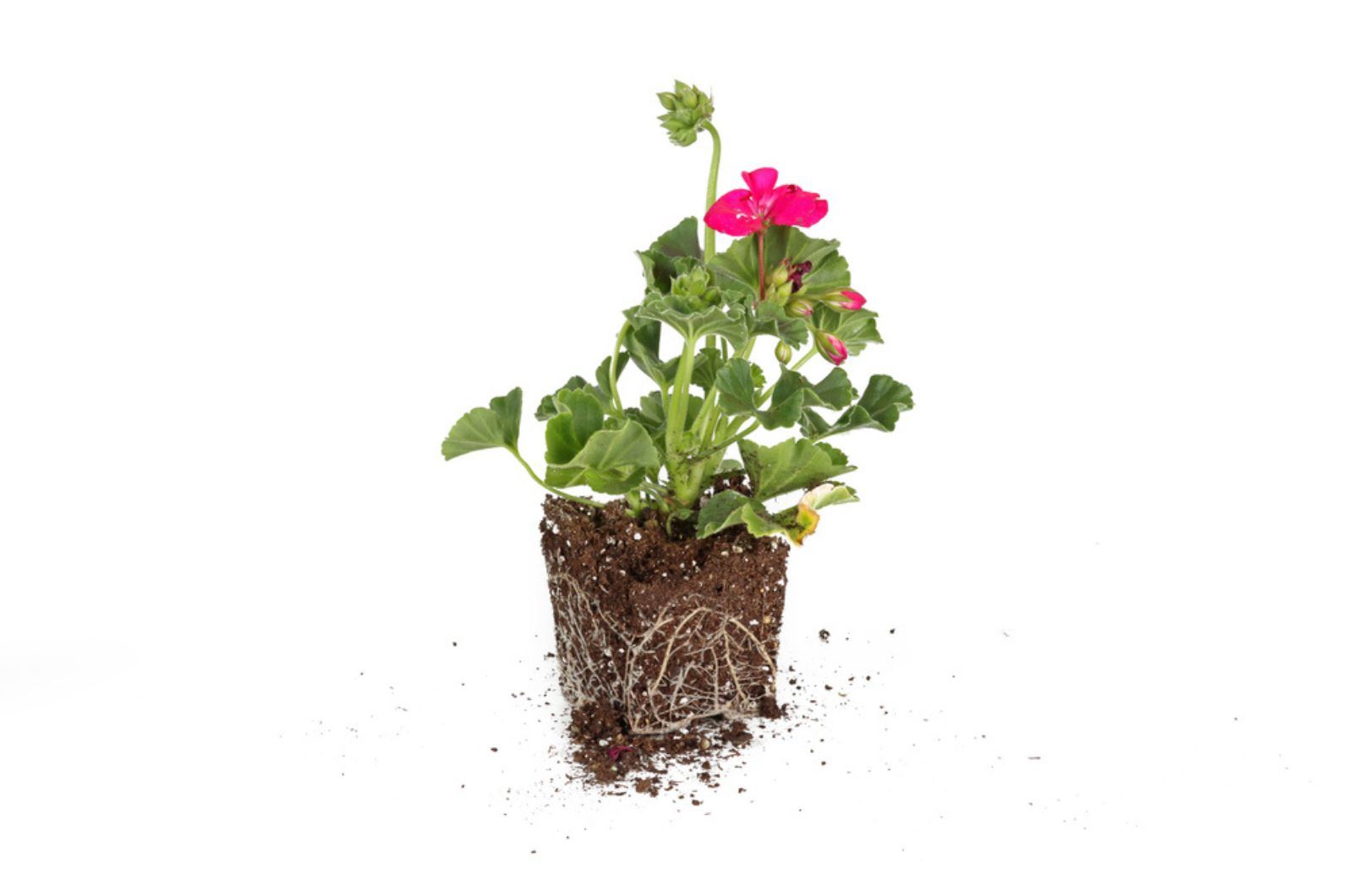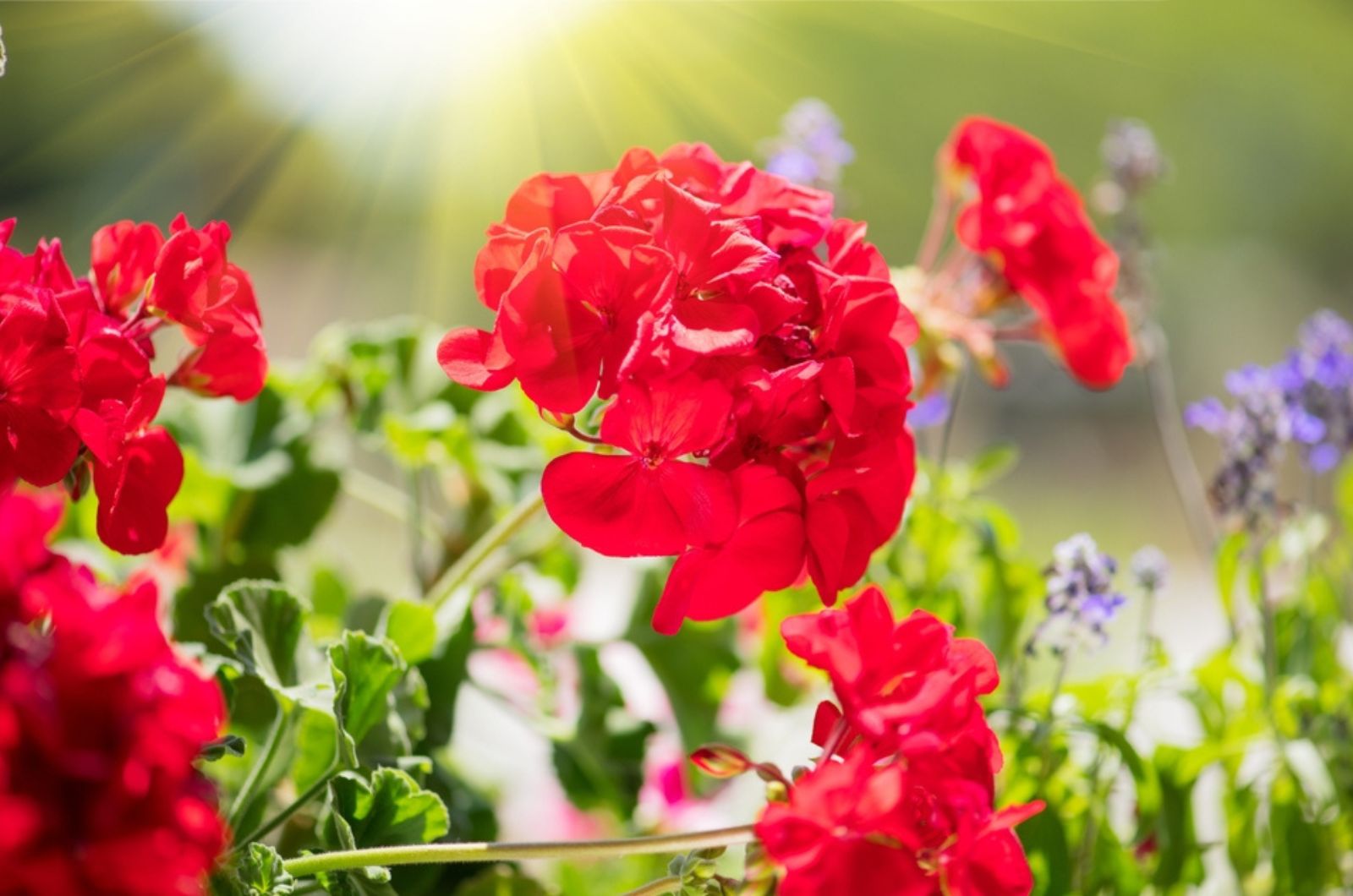Geraniums are one of my favorite garden flowers, and although they don’t survive the hottest Floridian months, they still provide great interest during winter.
However, I understand that not all of us live in warm regions and some of us have real struggles keeping these perennials alive over winter.
But don’t worry! I have some tricks up my sleeve I’m willing to share with you.
The key is to take your plants indoors before winter strikes and adjust their care a little bit.
Let’s get started!
Save Them Before It’s Too Late
You have to take your geraniums indoors before the first fall frost. These perennials hate being in the cold and even a light frost can damage their roots beyond repair.
They generally can survive light frosts, but I wouldn’t play around with it. Their stems and leaves will quickly start to die off, but that’s not the big issue.
The roots will suffer great damage due to cold temperatures and constant freeze-thaw cycles. This may cause the fine roots to die off (even in trees, let alone in geraniums). (1)
And once geranium roots are severely damaged, there’s little you can do to save it. Therefore, it is best to take action as soon as the temperatures drop into the 50s and 40s.
This will also allow you to clean up your garden and containers before winter and keep your yard organized.
2 Ways Of Overwintering Geraniums
There are two things you can do to your geraniums in order to safely overwinter them. You can take entire potted plants inside or you can overwinter them as bare root plants.
Each method has its perks, so you’ll have to decide which method is easier for you.
1. Take Your Geraniums Indoors
If you grow your geraniums in smaller planters or hanging baskets, you can move them indoors before the first frost and continue growing them as indoor plants.
There are some tips that can help you keep your geraniums blooming and have some color during this bleak season.
These plants come from regions of South Africa (at least the garden geraniums that we love so much do) and thrive in bright and warm temperatures of around 70°F.
Give your plant these conditions and water it whenever the top of the soil dries out, and you’ll have a gorgeous houseplant over winter.
But note that they sometimes may not bloom, so don’t be disappointed if this happens to you. You’ll have a healthy and strong plant ready to go in the ground in spring.
You can also overwinter geraniums in a dormant state. You’ll have to prune it to about half its size and keep it in a cool and dark area without allowing it to freeze. A garage works wonders in this case.
Cover your geranium with a paper bag or a burlap of some sort. Light may wake it up from dormancy and you’ll have to move it to a warmer area and tend to it a bit more if this happens.
Check up on your dormant geranium every few weeks and lightly water it about once a month. Let it dry a bit before covering it with a bag or burlap.
When spring comes, you can just move your plants outdoors to start growing anew.
Watering During Winter
The key to proper irrigation is keeping these plants consistently moist but without overdoing it. Remember that almost all plants are more sensitive to over than underwatering, so it’s better to give them a little less moisture than too much.
The best sign they need hydration is the soil. If the top portion (1-2 inches deep) of it is dry, you can irrigate your geranium until you notice excess water draining through the bottom hole.
Generally speaking, your plants need water every 10-14 days if kept in average household humidity (around 40%).
Winter Care
The best winter spot for your geraniums is near a bright, south-facing window where they can get plenty of sunlight. It won’t burn their foliage because short winter days quickly darken.
And if you don’t have a south-facing window, or it’s occupied by other plants, you can always use artificial lights for plants.
Just make sure to avoid any drafty location, such as near old windows, doors and hallways, heaters, and AC vents. These spots frequently experience temperature fluctuations which can stress out your geranium.
2. Save Them As Bare Root Plants
You can also save your geraniums as bare root plants. This method is particularly useful for overwintering in-ground plants or if you don’t have that much free space in your home.
The first thing you need to do is cut your plant back to about a third of its original size and then dig them up from the flowerbed or pull them out of their container. You can also prune them after digging them up, but trimming them beforehand makes your job a lot easier.
Now all you have to do is place them upside down in a brown paper bag or a cardboard box, top of the plant first.
Keep them in a cool and dark spot that doesn’t freeze overwinter, such as a garage or a shed.
Then, when the temperatures warm up in spring, you can plant the bare root geraniums directly in containers or the ground.
Geranium Spring Care
Whether you decide to overwinter your geraniums as houseplants or bare root plants, spring care is pretty much the same.
Plant your geraniums outdoors once all danger of the last spring frost has passed (that’s usually in May).
Then, give them a light feed of well-balanced fertilizer. Many gardeners use compost or worm casting teas because they deliver nutrients quickly, but you can use commercial liquid fertilizers if you want.
Continue applying diluted fertilizer every 2-3 weeks for the next month and a half, and your geraniums will quickly spring back up.
You can also use slow-release fertilizers, but know that it will take time for them to feed your geraniums. However, they will last a long time (up to 3 months) so you can just follow the instructions on the package for the best results.
Water your geraniums frequently in spring to meet their requirements now that they’re growing, and consider growing some geranium companion plants for an amazing floral display.
References:
1. Ambroise, V. et. al. (2020). The Roots of Plant Frost Hardiness and Tolerance. Plant and Cell Physiology.

